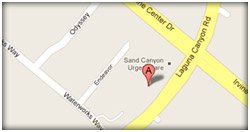The Allergic Response
Allergies vs. Immunity
An allergy is when your body reacts to something in nature that is normally tolerated. These substances are called allergens, and include things like pollen from plants (weeds, trees, and grasses), foods (peanut, tree nuts, milk, egg, and fish), and animals (cats and dogs). These things do not bother people who do not have allergies. Some people think that with allergies you have a weakened immune system but it is actually an overactive immune system.
At some point in your life, when you come in contact with a allergen your body reacts by making the allergic antibody called IgE. Antibodies, otherwise known as Immunoglobulins (Ig's) usually fight infection. For instance, the antibody (or immunoglobulin) that fights bacterial infections is called IgG. If you don't have IgG you have a seriously suppressed immune system and may have serve life threatening infections. Historically the allergic antibody, IgE fights parasites and in third world countries people may have high levels of IgE because of parasite infections. In the developed world, like the United States, a high level of IgE most likely correlates with allergies and allergic diseases. There are other nonallergic diseases that have high levels of IgE, but those are beyond the scope of this discussion and best discussed with your doctor.
Ok, back to allergies, how does it work?
Once your body starts to make the allergic antibody IgE you have become allergic. These antibodies are very specific, meaning that there is a different special (or specific) antibody against each thing that you are allergic to. The IgE spends a very short amount of time in the blood and moves out of the blood and into different organs and "tissues" in the body. Once it is in the tissue it binds, or connects onto special docking stations on allergy cells. These docking stations are called receptors and are also very specific for IgE, however any IgE can bind to the receptor. The IgE literally looks like a "Y" with the long end binding to the receptor for IgE and the two short arms binding to the thing that you are allergic to. Now your body is primed and ready to react to an allergen.
How do I get the symptoms of my allergies?
Now that your are primed or "sensitized" your body is ready to react to an allergen and cause the symptoms of allergies. When allergies affect the nose it is called "allergic rhinitis" sometimes called "hay fever". Hay Fever or pollen allergy is one of the most common types of allergies, or allergic rhinitis. About 35 million Americans suffer from allergies due to pollen. Pollen is made by many common trees, grasses and weeds. These plants may release pollen into the air you breathe during the spring, summer and fall. You may find that your symptoms vary at different times of the year. It all depends on the kinds of plants that grow where you live and what you are allergic to. Since these symptoms vary based on the season it is termed "Seasonal Allergic Rhinitis" or SAR for short. Typically, Hay Fever is caused by specific weed pollen, called Ragweed. However, people frequently use this term, "Hayfever" for any pollen allergy.
One major allergy cell is called the mast cell, and it is this cell that the IgE is loading onto. These cells are full of many sacks or granules that are filled with chemicals. Once the allergen binds to the IgE it sends a signal into the mast cell to release the contents of these granules. The mast cell then releases several chemicals such as histamine (that is why antihistamines work for allergies), tryptase, chymase, and leukotrienes. These chemicals cause inflammation and are responsible for the symptoms of allergies.
Histamine is one of the major chemicals released from the mast cell. Histamine can affect the local nerve endings causing itching. When it affects the blood vessels it can cause them to dilate or swell. Once they swell, fluid will seep out and cause congestion. This is why you get a stuffy nose, itchy nose, or runny nose when you get around dust, or a cat that you may be allergic to. In other words, inflammation is caused by release of all these chemicals from the mast cell. If you can imagine the redness you get on your skin around a cut or scratch; that is inflammation. That is very similar to the inflammation that happens in your nose, eyes or lungs from allergies.








